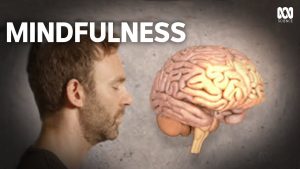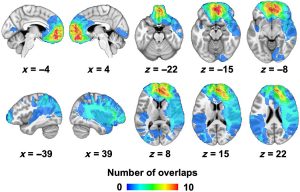Mindfulness is Associated with Improved Academic Performance
By John M. de Castro, Ph.D.
Mindfulness can help all students (struggling or not) be more productive; it can help reduce depression, low moods, low self esteem, and anxiety; it increases well-being, self-compassion, compassion towards others and increases emotional resilience. A powerful tool!” – Rebecca Enderby
In the modern world education is a key for success. There is a lot of pressure on college students to excel so that they can get the best jobs after graduation. The pressure can lead to stress, anxiety, and depression which can impede the student’s mental health, well-being, and school performance. But it is, for the most part, beyond the ability of the individual to change the environment to reduce stress, so it is important that methods be found to reduce the college students’ responses to stress; to make them more resilient when high levels of stress occur.
Contemplative practices including meditation, mindfulness training, exercise, Tai Chi and Qigong, and yoga practice have been shown to reduce the psychological and physiological responses to stress, relieve anxiety, and reduce depression. But more research is needed.
In today’s Research News article “Benefits of mindfulness in academic settings: trait mindfulness has incremental validity over motivational factors in predicting academic affect, cognition, and behavior.” (See summary below or view the full text of the study at: https://www.ncbi.nlm.nih.gov/pmc/articles/PMC8895775/ ) Kuroda and colleagues recruited college students and had them complete measures of mindfulness facets, competence self-perception, implicit theory of intelligence, achievement goals, reasons for academic study, test anxiety, enjoyment in studying, study strategies, mind wandering, and help seeking avoidance.
Applying hierarchical regression, controlling for motivational factors, they found that mindfulness facet of acting with awareness was positively related to enjoyment of learning and negatively related to mind wandering, and test anxiety, while the facets of non-judging and observing were positively related to enjoyment of learning, and non-judging was negatively related to mind wandering. Hence, mindfulness appears to be related to academic performance variables.
These results are correlational. So, causation cannot be determined. In addition, academic performance itself was not measured. But the relationship with variables that predict positive academic performance suggests that mindfulness is associated with better ability to perform in a university setting even while considering the individuals’ motivations.
“the association between mindfulness and academic achievement is similar across diverse student characteristics.” – Camila Caballero
CMCS – Center for Mindfulness and Contemplative Studies
This and other Contemplative Studies posts are also available on Twitter @MindfulResearch
Study Summary
Kuroda, Y., Yamakawa, O., & Ito, M. (2022). Benefits of mindfulness in academic settings: trait mindfulness has incremental validity over motivational factors in predicting academic affect, cognition, and behavior. BMC psychology, 10(1), 48. https://doi.org/10.1186/s40359-022-00746-3
Abstract
Background
Achievement motivation research has established that motivational factors predict academic affect, cognition, and behavior. Recent studies have shown that trait mindfulness might also predict these academic outcomes. However, it remains unclear whether trait mindfulness has incremental validity over motivational factors. We hypothesized that trait mindfulness would explain unique variance in academic outcomes beyond motivational factors, because mindfulness that is characterized by the being mode of mind (i.e., a present-focused, non-striving, and accepting mind mode) would contribute to academic outcomes through unique and effective self-regulatory processes (i.e., bottom-up self-regulation of learning and present-focused, acceptance-based self-regulation of academic stress), which differ from those (i.e., top-down self-regulation of learning and future-focused, change-oriented self-regulation of academic stress) promoted by motivational factors that are characterized by the doing mode of mind (i.e., a goal-oriented, striving, and change-seeking mind mode). We tested the hypothesis by examining four established motivational factors (competence perception, implicit theory of intelligence, achievement goals, and autonomous and controlled academic reasons) and five outcome variables (test anxiety, enjoyment of learning, study strategy, mind-wandering, and help-seeking avoidance) that had been investigated in both the trait mindfulness and achievement motivation literatures.
Methods
One hundred and seventy-five students (104 females) were recruited from undergraduate psychology and cultural studies classes at two universities in Japan. Trait mindfulness was assessed using the Five Facet Mindfulness Questionnaire. The other study variables were assessed using established measures as well. We conducted hierarchical multiple regression analyses to test the hypothesis.
Results
Trait mindfulness predicted four of the five outcome variables (i.e., test anxiety, enjoyment of learning, mind-wandering, and help-seeking avoidance) after controlling for the motivational factors. The acting-with-awareness facet predicted three outcome variables, whereas the other facets predicted one outcome each.
Conclusions
This study supports the incremental validity of trait mindfulness relative to motivational factors, suggesting that not only the doing mode of mind but also the being mode is beneficial for academic learning.
https://www.ncbi.nlm.nih.gov/pmc/articles/PMC8895775/









